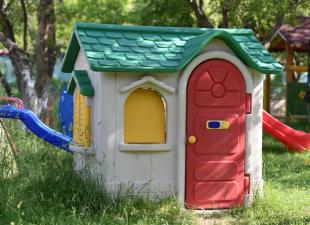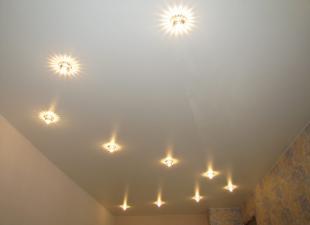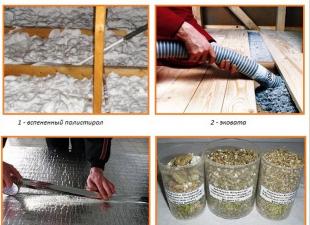0
According to the laws of physics, warm air contains more moisture than cold air. In areas with large temperature differences, water vapor settles on a colder surface, forming condensation.
Especially in summer, so many water droplets collect that they run down to the floor, where non-drying puddles form. And constantly wet pipes begin to rust, mold and fail faster.
Condensation occurs on water pipes for a variety of reasons. First of all, these are technical malfunctions:

Also, the amount of condensation is affected by the humidity of the surrounding air. This parameter is often determined by reasons that are impossible or very difficult to eliminate:
- humid climate;
- prolonged precipitation;
- large bodies of water nearby.
How to get rid of condensation on pipes: the main ways of dealing
The harmful effects of moisture on plumbing equipment and the room makes you think about methods of combating the formation of condensation. Most of them are relatively simple and inexpensive.
Installing an exhaust fan in the bathroom
First of all, excess moisture is eliminated by the inflow of fresh air. If there is no ventilation at all, it is advisable to organize it.
Debris trapped in the ventilation duct can impede the operation of your existing system. It is necessary to unscrew the grate and carefully clean out the dust and cobwebs from the hole.
You can verify the presence of a draft by holding a lighted match to the hole. If the draft is still insufficient, you need to buy and build a fan into the duct.
Installation of insulating tubes
 High-quality insulation is one of the most effective ways. Efficient and inexpensive vapor-tight insulation is made of polyethylene foam. This material is called energoflex and is sold in the form of finished tubes of various diameters or in rolls.
High-quality insulation is one of the most effective ways. Efficient and inexpensive vapor-tight insulation is made of polyethylene foam. This material is called energoflex and is sold in the form of finished tubes of various diameters or in rolls.
Before use, the pipeline must be dried, then cut the elastic tunnel lengthwise and put it on the pipe. The joints are treated with polyurethane foam and fixed with waterproof tape.
Epoxy putty application
Homemade insulation can be made from epoxy putty and old scraps of fabric. The pipe is cleaned of traces of rust with sanding paper, wiped with acetone to remove grease and additionally with a special anti-rust agent.
Now the main layer of epoxy putty is applied to it and quickly wrapped around the still wet surface with strips of rags. After winding two or three layers, the fabric is fixed with a wire and a finishing layer of epoxy putty is applied on top of it. Now you need to wait until it dries and you can clean and paint the surface.
Temporary ways
If you do not have the necessary materials, or at the moment it is impossible to carry out work, you can use simple methods. But remember that they are not suitable for long-term use.
- Wrap a bandage around the wet pipe and lower its tip into a container to collect water.
- Keep doors open at all times.
- Place moisture absorbers in the room, such as silica gel beads in bags.
Processing of water pipes
 Plumbing pipe treatment is the most affordable and effective way to deal with condensation. Older systems are usually made of metallic components and are more susceptible to leaks and corrosion.
Plumbing pipe treatment is the most affordable and effective way to deal with condensation. Older systems are usually made of metallic components and are more susceptible to leaks and corrosion.
Modern pipelines can be made from both durable plastic and fracture-resistant metal alloys.
Metal pipes
Metal pipes are particularly susceptible to corrosion in damp conditions. Moreover, they lend themselves well to staining. Previously, the old rust is cleaned and the metal is coated with anti-corrosion compounds: carbolate paste, protective primers based on drying oil or epoxy varnish. Then the outer surface is painted with oil paint.
In the bathroom
The small area of the bathroom often leads to the fact that the risers are located too close to each other. As a result, the pipes “cry”, creating additional dampness in an already humid room.
Cold pipes laid open can be painted with any oil paint or enamel. Only heat-resistant enamels are suitable for hot pipes and heated towel rails.
If a faucet or shower drips, this will add additional cooling to the pipes. Heat transfer between them and the environment is enhanced, and condensate is formed more intensively. In addition, water is wasted, which harms the environment and makes water meters spin. Therefore, keeping your plumbing in good condition will bring tangible savings and benefits.
In the toilet
The need to process pipelines in the toilet is also associated with their close location in space. In addition, a leaking tank leads to a constant movement of cold water through the pipes, and this, in turn, to their additional cooling.
Equipment repairs plus thermal insulation and painting will help keep utilities dry.
 Plastic pipes do not rust, but condensation on them also leads to puddles on the floor and mold on the walls. If the system was not initially installed in an optimal way, you will have to pay attention to it, ensuring isolation.
Plastic pipes do not rust, but condensation on them also leads to puddles on the floor and mold on the walls. If the system was not initially installed in an optimal way, you will have to pay attention to it, ensuring isolation.
Cold water pipes
Universal thermal insulation for plastic "cold" pipes is expanded polystyrene, or simply polystyrene. It does not have elasticity, so the insulation is produced in two parts with a pipe recess.
The polystyrene foam halves are put on the pipeline and fastened with special connecting elements and reinforced adhesive tape. Thanks to this, the tightness of the insulation is achieved, which is very important for achieving a good effect.
Glass wool or mineral wool is also used. These heaters can be purchased according to the diameter of the pipes or you can buy a whole roll, which can then be used as needed.
With hot water
The difficulty is that it cannot be applied to plastic pipes at home. You will have to take care of purchasing pipes with a suitable coating with a thickness of 3 cm, made at the factory.
Chemical treatment
 There are special chemistries for dealing with condensation on pipes. For pipelines with cold water, the industry offers tools such as:
There are special chemistries for dealing with condensation on pipes. For pipelines with cold water, the industry offers tools such as:
- Grafotherm;
- Stermisole;
- Corundum, etc.
The cleaned surface is treated with a primer and a protective mixture is applied using a spray gun or a brush. It is recommended to apply the product in several layers to enhance the action. Each next layer is applied after the previous one has dried. On top of the latter, a so-called fixer is applied. It protects insulation and improves the appearance of communications.
Steam traps
Since the problem of water condensation is widespread, there are devices that trap the water vapor and remove the resulting liquid. In particular, condensate traps are installed at the outlet of water heaters. Depending on the heat exchange scheme, thermodynamic, thermostatic and mechanical devices are used.
The most popular are condensate traps operating on the float principle of operation. They separate the accumulated water from the steam and remove it from the system, taking advantage of the difference in density between water and steam.
Float devices have the following advantages:
- exceptional reliability;
- high performance;
- optimal energy saving in the system.
Insulating pipes at home
A skilled owner can do most of the work on thermal insulation on his own. Replacing a leaking elbow on a plastic pipe requires almost no special equipment. You can also bend the pipe to increase the distance to the adjacent pipe. This method is often used for isolation. A corrugation of a larger diameter is put on the pipe and the gap is filled with polyurethane foam.
If the pipes are walled up under the tiles, it is also advisable to insulate them. Otherwise, black mold will appear in the tile joints.
For information on how to properly insulate pipes in the bathroom, watch the video.
In the apartment
When carrying out work in an apartment building, it must be borne in mind that risers, drain pipes, etc. are common property. It is better to coordinate actions with them with the management company. Also, in order to turn off the water supply, you will have to contact your local plumber. The equipment in the bathroom and toilet, pipes and flexible hoses, as a rule, belong to the owners of the apartment. They can be processed and replaced at your discretion.
In a private house
In a private house, the owner is responsible for all communications, external and internal. Even at the construction stage, you need to pay attention to the wiring diagram and the thermal insulation of the system. To correct the situation in the finished house, you will have to apply the above methods of dealing with condensation.
If it is impossible to get rid of the condensate, the walls and floor are waterproofed. And this is already costly and voluminous repair work that only specialists can perform.
Preventive measures
 To avoid finishing touches and alterations on the water supply system, you need to remember about a proven tool - prevention. Following simple recommendations will help to reduce the amount of condensation without much effort:
To avoid finishing touches and alterations on the water supply system, you need to remember about a proven tool - prevention. Following simple recommendations will help to reduce the amount of condensation without much effort:
- Leaving the bathroom door open, especially after showering.
- Install the grate at the bottom of the door and widen the gap between the door and the threshold.
- Increase the diameter of the exhaust duct.
- Arrange forced draft by installing a fan.
- Choose plastic windows with micro-ventilation.
- Monitor the condition of the cranes and the tank, carry out repairs in a timely manner.
If excess moisture remains, you can purchase a separate dehumidifier or air conditioner with this function.
The choice of how to deal with water condensation depends on the reasons for its occurrence in a given location. It should be noted that even if there is no more condensation on the surface as a result of temporary measures, the root cause must be found and eliminated. After carrying out correctly planned work, the pipes will be reliably insulated, and the air humidity will decrease. This ensures that your home is free of mold and dampness.
 parlini.ru Repair of an apartment, a summer residence and a house.
parlini.ru Repair of an apartment, a summer residence and a house.


